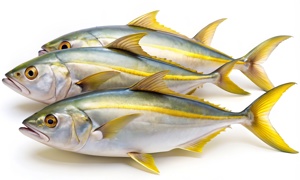
03 June 2025 | 5 min. readingtime
When nature feels the heat
Climate change and biodiversity loss are two sides of the same coin. At a.s.r. asset management, we are taking action on three fronts to address these two pressing issues.

17 March 2020 | 4 min. readingtime
Fur is controversial, and always will be. Its opponents cite ethical arguments such as animal suffering. Its proponents point out the polluting aspect of fake fur. And even though the debate has reached a tipping point and a growing number of consumers are aware of the hard world behind soft furs, not every luxury fashion brand has banished fur or has set strict, sustainable requirements for the production of this material yet. That is why we and two other portfolio management companies have engaged with five luxury fashion brands.
Fur and other animal skins were originally the by-product of cattle farming and hunting. An accepted product, a status symbol and, moreover, something that lasted a lifetime. But the demand for fur grew and breeding farms were established to keep up the supply. Farms where there was no place for animal welfare.
In tandem with demand, animal activists increased their pressure on the fur and fashion industries. This, and growing consumer awareness, has led some luxury brands to choose to go fur free. Regulations are also changing in more and more countries. In some countries, fur is banned or new breeding farms are not allowed. Regulations in Europe are humane and guarantee animal welfare. And the luxury fashion industry has established guidelines on the origin of animal skins.
At the same time, we observe that fur production is increasing in less regulated and unregulated countries. In addition, the fashion brands’ guidelines are not strict requirements; various fashion houses let their designers decide and cite ‘creative freedom’ as a reason why they do not need to intervene.
Innovations in the area of alternative materials such as fake fur also increasingly influence the debate on fur. While opponents of fake fur emphasise its environmental impact, various studies show that real fur places a much greater burden on the environment. For example, to produce one kilogram of fur requires eleven animals and 563 kilograms of food. And as items quickly go out of fashion these days, a garment with fur is no longer a purchase for life, making the product a lot less sustainable. Something that cannot always be said of fake fur, which can now even be made from recycled polyester.
The debate on fur is therefore both controversial and complex, and still very much relevant. That is why we, together with the portfolio management companies Actiam and Aegon Asset Management, have engaged with five luxury fashion brands, to find out their views on the use of fur, the change in consumer sentiment observed by them, how guidelines are developing and whether they would commit to phasing out fur in their brands.
These discussions provided insight into new developments in this sector. They also revealed major differences between the brands, with some pioneering innovation and the application of ESG (Environmental, Social & Governance) criteria and with others lacking vision on these fronts. Particularly striking was their unanimous conviction that there is still much demand for fur in the market, despite the apparent turnaround in consumer behaviour.
The ESG criteria that we apply to our SRI policy conflict, among other things, with the lack of animal welfare in the production of fur and exotic animal skins. To change this, we want to convince the luxury fashion brands that are not yet fur free to take a stand on this point. By phasing out fur now or, if they do continue to use fur, to be completely transparent about where and how the materials are obtained. As an investor, moreover, we expect them to explore, develop and implement alternatives to fur and develop a holistic view of the environmental impact of their choice of product.
This blog is an abridged version of the white paper: “Fur is increasingly faux-pas: engaging luxury brands for sustainable practices”. A detailed report based on our engagements and research into the developments and controversies of fur and animal skins in the world of luxury fashion. This white paper is not the conclusion of our commitment to this issue – on the contrary. We will continue to proceed in line with our investment principles and closely monitor the steps taken by these companies on this issue.

03 June 2025 | 5 min. readingtime
Climate change and biodiversity loss are two sides of the same coin. At a.s.r. asset management, we are taking action on three fronts to address these two pressing issues.

21 May 2025 | 5 min. readingtime
1.5°C was the crucial limit to avoid the most catastrophic consequences of climate change. There is now a growing awareness that this goal is rapidly moving out of sight. That means something to humans and the planet.

07 April 2025 | 5 min. readingtime
The ASR Global Impact Equity Fund invests in companies that contribute to sustainable transitions, such as the transition to responsible food production. A good example of this is sustainable fish.